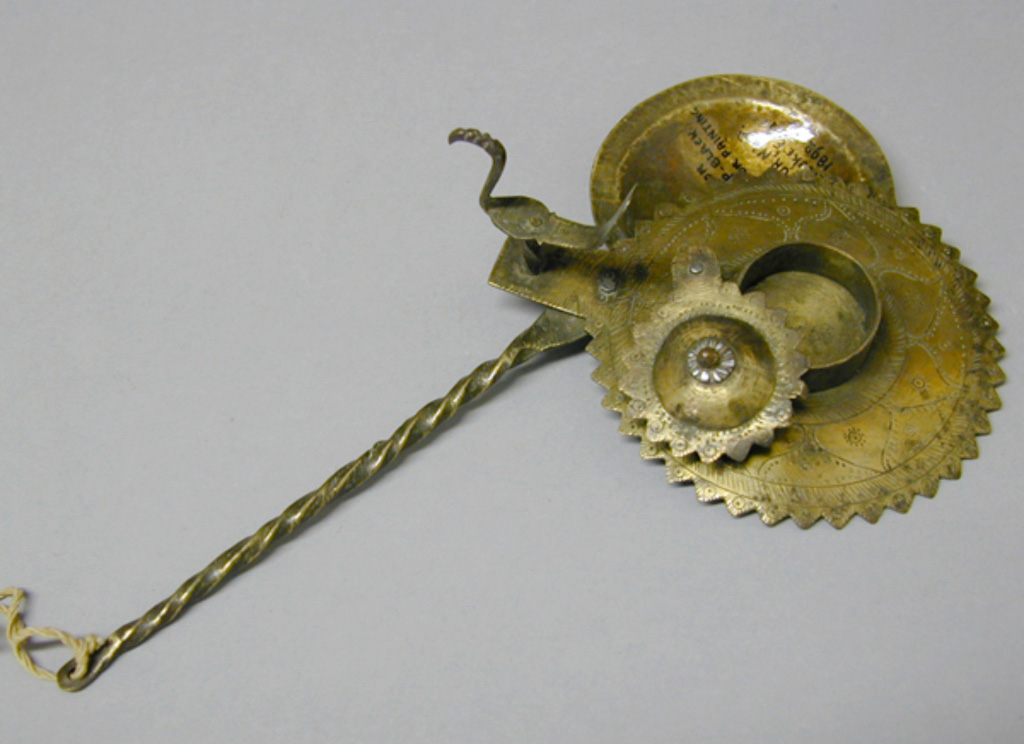Lamp-black tool
India, 19th century
 Donated by William Crooke in 1892; 1892.49.52The black, carbon-based element of kohl came from a variety of sources. As well as the geological sources of galena and antimony, charcoal or soot were also used. For millennia before the advent of gas and electricity, oil lamps were used to provide artificial light – and an abundant supply of soot or 'lamp-black'. Burning linseed oil, hempseed oil, paraffin or olive oil, etc. produces slightly different textures of lamp-black. In India, the fuel is usually ghee (clarified cow butter). Regardless, the product is very fine in grain and needs no extra grinding. With just an addition of gum water it produces a pigment that can be used as ink, artist's paint, or make-up.
Donated by William Crooke in 1892; 1892.49.52The black, carbon-based element of kohl came from a variety of sources. As well as the geological sources of galena and antimony, charcoal or soot were also used. For millennia before the advent of gas and electricity, oil lamps were used to provide artificial light – and an abundant supply of soot or 'lamp-black'. Burning linseed oil, hempseed oil, paraffin or olive oil, etc. produces slightly different textures of lamp-black. In India, the fuel is usually ghee (clarified cow butter). Regardless, the product is very fine in grain and needs no extra grinding. With just an addition of gum water it produces a pigment that can be used as ink, artist's paint, or make-up.
In India, kohl is known as kajal and is traditionally prepared by the women of the household. A small piece of white muslin cloth is repeatedly dipped in sandalwood paste or the juice of the milkwood pine tree and dried in the shade. After sunset, the cloth is fashioned into a wick, which is used to light a mud lamp filled with castor oil or ghee. A brass implement such as this, with two collecting dishes with swivel lids, is positioned upside-down over the lamp leaving just enough of a gap for oxygen to supply the flame overnight. In the morning, the brass vessel is lined with soot.
Kajal is traditionally applied with a feather. In Punjabi culture it is worn predominantly by men on special social or religious occasions, and for Muslim women too it has religious connotations, since the daughters of the prophet Mohammed were said to have worn kohl around their eyes. It is held by many to protect the eyesight and vision in both the physical and supernatural senses: the soot irritates the eye causing tearing, which keeps the eyes washed clean of contaminants, grit, and bacteria, while some women dab a spot of it on the forehead, nose or ears of infants to ward off the Evil Eye. For Hindus, kajal is part of a larger tradition what teaches a woman how to decorate herself, especially after marriage. In South India, kajal-outlined eyes, flowers in the hair, bright bangles on the arm, the tilak or bindi mark on the forehead, a sari, and perhaps hennaed hands and feet, are all seen as complementary adornments.
